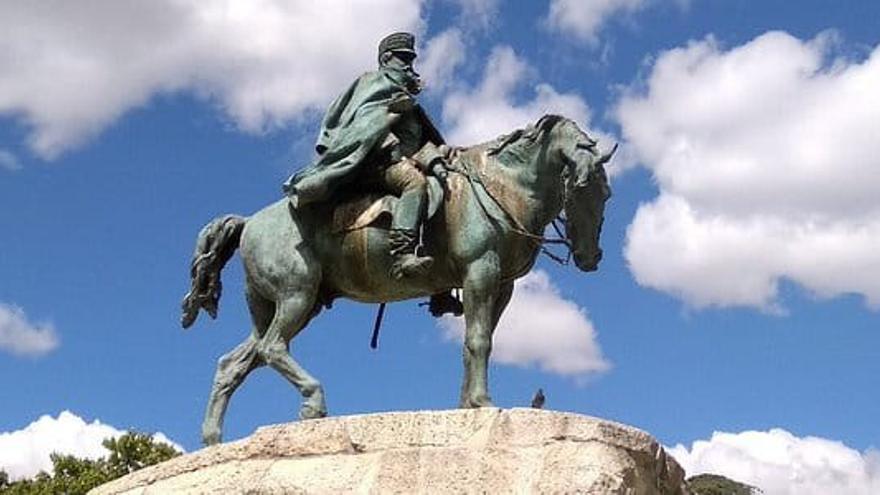
![]() 14ymedio, Yunior García Aguilera, Madrid, 8 November 2023 — In 1895, when almost all of the rest of Latin America had already achieved its independence, we Cubans were still a colony of Spain. All previous attempts had failed: the Big War and the Little War. And Martí’s War, as Máximo Gómez called it, began with the early and unnecessary death of its principal brain.
14ymedio, Yunior García Aguilera, Madrid, 8 November 2023 — In 1895, when almost all of the rest of Latin America had already achieved its independence, we Cubans were still a colony of Spain. All previous attempts had failed: the Big War and the Little War. And Martí’s War, as Máximo Gómez called it, began with the early and unnecessary death of its principal brain.
The captain general of Cuba at that time was Calleja, who had some 14,000 soldiers throughout the island and did not attach much importance to the new uprising. He believed that the conflict would soon die down due to lack of fuel. But in Spain all the alarms bells went off. Almost immediately, Calleja was replaced by the man from Zanjón, “the most prestigious military man in Spain”: Arsenio Martínez-Campos Antón.
For most Cubans, Martínez-Campos is only remembered for the Baraguá Protest. And from this event we only have two sentences: “Guard that document,” and “We don’t understand each other.”
In Retiro Park, in Madrid, there is a solemn equestrian sculpture dedicated to the Spanish general. When I saw it for the first time, I thought about how little we Cubans know about a character who had a major importance in our history. For most Cubans, Martínez-Campos is only remembered for the Baraguá Protest. And from this fact we are left with only two sentences: “Guard that document” and “We don’t understand each other.”
For the Spain of 1895, the Segovian was a figure of the first order, with extraordinary military, theoretical and political experience. He had returned from his first stay in Cuba with the rank of brigadier. He later participated in the Carlist wars and was the architect of restoring the Bourbons to the throne, becoming “the man from Sagunto” for the Spanish. In 1876 he returned to Cuba with the mission of achieving peace.
Much is said about Maceo and his protest against Zanjón, although in reality, the Bronze Titan, as he was known, had to leave the country shortly afterwards with a safe conduct. However, little is known about another great Cuban and another act of resistance: Ramón Leocadio Bonachea and the Jarao Protest. This was the last mambí left fighting in Cuba and the only one to reach the rank of division general in the war of 1868. And although he was also forced to go into exile, he returned in 1884, and was arrested and executed one year later.
Martínez-Campos returns to Spain as “the peacemaker” of Cuba. He held the position of president of the Council of Ministers and Minister of War. He then took charge of creating the General Military Academy. It is said that the decision to send him again to Cuba in 1895 did not unleash the general’s joy. The queen regent, at his farewell, saw him disheartened and pessimistic, and she was convinced that he was not the man to lead that war. It is also said that before setting sail, he murmured: “Who knows! What is now is not what was then. The pitcher can only go to the fountain so many times…”
The fall of Martí in the Dos Ríos skirmish did not diminish the morale of the Mambises, as the Spaniards expected. In June, Máximo Gómez crossed the Jobabo River, entering Camagüey against all odds. This depressed Martínez-Campos to the point of his wanting to resign. But later he would defeat Maceo in his attempt to take Bayamo with twice as many men, something that gave him back a bit of optimism.
In June, Máximo Gómez crossed the Jobabo River, entering Camagüey against all odds. This depressed Martínez-Campos to the point of his wanting to resign
However, doubt gnawed at the 64-year-old general. He was convinced that his attempts to negotiate peace were fruitless, because the parties had lost influence; because Spain had not finished applying the Abarzuza reform law of 1895, finally granting autonomy; and because the mass of the population supported the insurgents. He was aware that it would be inevitable to isolate the towns, reconcentrate the families and cut off supplies to the mambisado. But his Christian principles and character prevented him from such cruelty. He even said: “I think I don’t have the conditions for the case. In Spain, only Weyler has them.”
In November, Gómez harangued his troops, speaking of “the hard and merciless war,” in contrast to that “generous and brief war” that Martí preached. He had 3,000 horsemen to cross the trail that divided the island in half, and they succeeded. The Spanish spoke of a “fugitive offensive,” since the purpose of the invading column was to flee forward, avoiding confrontations and burning everything in its path. Martínez-Campos offered himself as bait, to provoke a direct confrontation, but Gómez and Maceo “wobbled,” leaving the Spanish general with all the desire, “fighting against fires and hurricanes.”
In February 1896, Valeriano Weyler was appointed captain general. But Weyler… Weyler is another story.
____________
COLLABORATE WITH OUR WORK: The 14ymedio team is committed to practicing serious journalism that reflects Cuba’s reality in all its depth. Thank you for joining us on this long journey. We invite you to continue supporting us by becoming a member of 14ymedio now. Together we can continue transforming journalism in Cuba.
